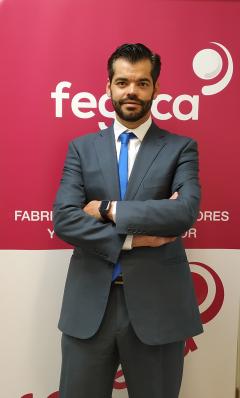

Vicente Gallardo (FEGECA): “Promoting the replacement of obsolete installations with latest generation equipment is one of the government’s priorities.”
Vicente Gallardo is chairman of the Heat Generator and Heat Emitter Manufacturers Association (FEGECA). He highlights the major challenges facing the sector including continuing energy efficiency improvements in products, linked to the energy saving that it provides, increasing adoption of renewable energy sources, and integrating Internet of Things and artificial intelligence into the catalogue of products and services.
In your opinion, what are the significant challenges for manufacturers of heat generators and emitters?
The main challenges we face are continuing energy efficiency improvements in products linked to the energy-saving that it provides, increasing adoption of renewable energy sources, and integrating the Internet of Things and artificial intelligence into our catalogue of products and services.
Fegeca’s members have taken up these challenges. They have reacted effectively with their ongoing research and development projects that are yielding increasingly efficient products with improved remote management and control capabilities. In fact, they’ve been at the forefront of the transformation effort encouraged by the new European directives, adapting and expanding their product catalogue to respond to the technological diversity demanded by the current scenario.
How Can These Systems Contribute To Decarbonising Buildings?
Domestic hot water and heating systems are crucial elements in achieving targets for decarbonising buildings.
At the present stage, high-performance and energy-efficient systems powered by different energy sources coexist. The most widespread solutions in our market, such as condensing boilers, are used alongside other systems powered by electricity from other sources considered as renewable, such as aerothermal and geothermal, and other renewable energy systems, such as solar thermal or biomass systems. There are also hybrids of these systems that can achieve greater energy efficiency that are becoming increasingly common.
Promoting the replacement of obsolete installations with the latest generation equipment is one of the government’s priorities, equipment to make installations safer and more energy-efficient while reducing atmospheric emissions.
What can this latest-generation equipment do in the equipment replacement and improvements for homes and other properties?
To assess the different decarbonisation options properly, you first need to differentiate between solutions for new-builds and refurbishments. In principle, with new buildings, there are no barriers to installing any high energy-efficiency systems. The challenge is for refurbishing and renovating existing buildings, where space and other building features can often make installing renewable energy solutions technically or economically unfeasible.
For these cases, it’s important to stress the importance of Spain’s state-of-the-art gas distribution network, which is designed for renewable gases like biomethane without any adaptation. Not only that, but it could even, feasibly, handle hydrogen in the medium term. So, renewable gases and hydrogen for heating systems could have a significant impact on the decarbonisation process in the short term.
As far as the equipment is concerned, all gas appliances today can operate with bio and synthetic methane and bio-LPG without the need for retrofitting. In addition, many devices currently on the market can operate with up to 20% hydrogen mixed with any methane-based gas. In this respect, the industry is developing devices capable of working with 100% hydrogen.





